Paracord: What is it?

So you've heard everyone talking about paracord and you want to know what it's all about. Or maybe you have friends who keep asking you how paracord is a hobby. Either way, keep reading.
A Brief History
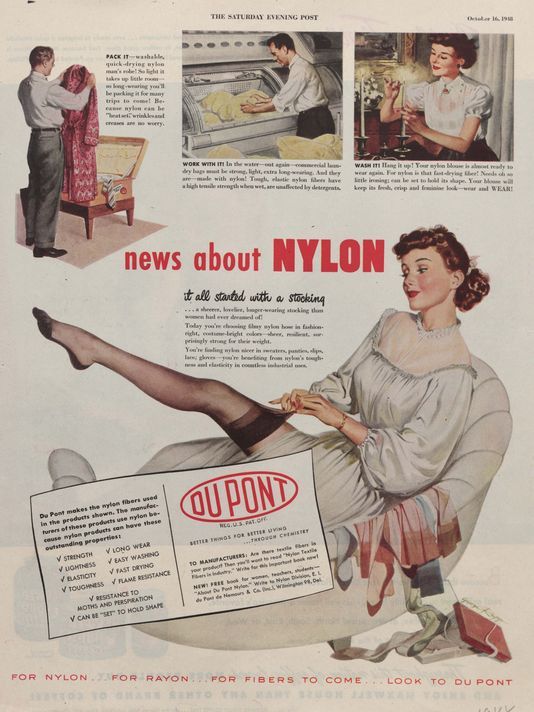
Nylon
Paracord was made possible through the invention of nylon in 1935 by Wallace Hume Carothers for DuPont. The man-made fiber was first used for toothbrushes and women's nylon stockings. Then, just like many other materials during WWII, most nylon production went to aid in the war effort. Nylon became an excellent replacement for silk in the making of parachutes and parachute cord. Silk, which is not a synthetic material, had to be imported from Japan. This posed obvious problems, considering the USA was at war with Japan. Nylon became a durable, cheaper replacement. After the end of the war, 80% of the world's nylon production went back to the production of women's stockings and lengerie. (thus the subtitle "A Brief History". Heh, heh. Okay fine, don't laugh.)
Nylon, because it is synthetic, has some important properties. It is rot, mildew, abrasion, and UV fade resistant. Which means that, unlike most naturally-occurring materials, it can be subjected to weather,abuse, and time without showing much wear. It also dries quickly, is somewhat elastic, and is much slower to aquire foul [er...human] odors, making it good for athletic clothing.
Paracord
Paracord, which has all the aforementioned benefits of being made of nylon, was first commissioned by the military. You can read the actual specifications below. People often don't know that there are, officially, 6 different types of paracord. If you are thinking, "Oh crap, I'm never going to understand all this," don't despair. Most people, when they talk about paracord, mean Type III, known commonly as 550 cord.
Types of U. S. Military Paracord
| Strength | Elongation | |
| Type I, | 95 lb | 30% |
| Type IA, | 100 lb | 30% |
| Type II, | 400 lb | 30% |
| Type IIA, | 225 lb | 30% |
| Type III, | 550 lb | 30% |
| Type IV, | 750 lb | 30% |
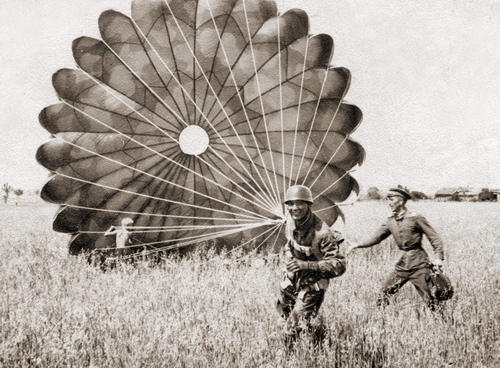
The document outlines many other requirements and tests that the paracord has to fill, which brings me to:

Not all paracord available is subjected to these requirements. Just because you find paracord that says "Type III, 550 cord" does not mean it lives up to actual military specifications. Not even all "Mil Spec" paracord is truly mil spec.
But this does not mean that all non-military paracord is inherently worthless, it just means that you shouldn't trust it to hold your own weight in situations where your life depends on it.
Anatomy
Paracord is classified as a kermantle rope, which means that it has a core (or kern) and outer sheath (or mantle).
Do you get it?
Core + mantle = kermantle.
The core of 550 paracord is usually made up of 7 strands, which are, in turn, made up of three smaller strands each. In military spec cord, you will find a manufacturer identification cord inside, but again beware: There are many imitations that use an ID cord that are not truly military spec. If you are buying paracord as a survival rope and think you will be using it to carry your own weight, you will want to buy your paracord from a place you trust.
The outer mantle is usually made up of 32 woven strands. While multiple colors may be used for the different strands, paracord in "rainbow' colors are usually not made of nylon, as single nylon strands cannot be dyed multiple colors.
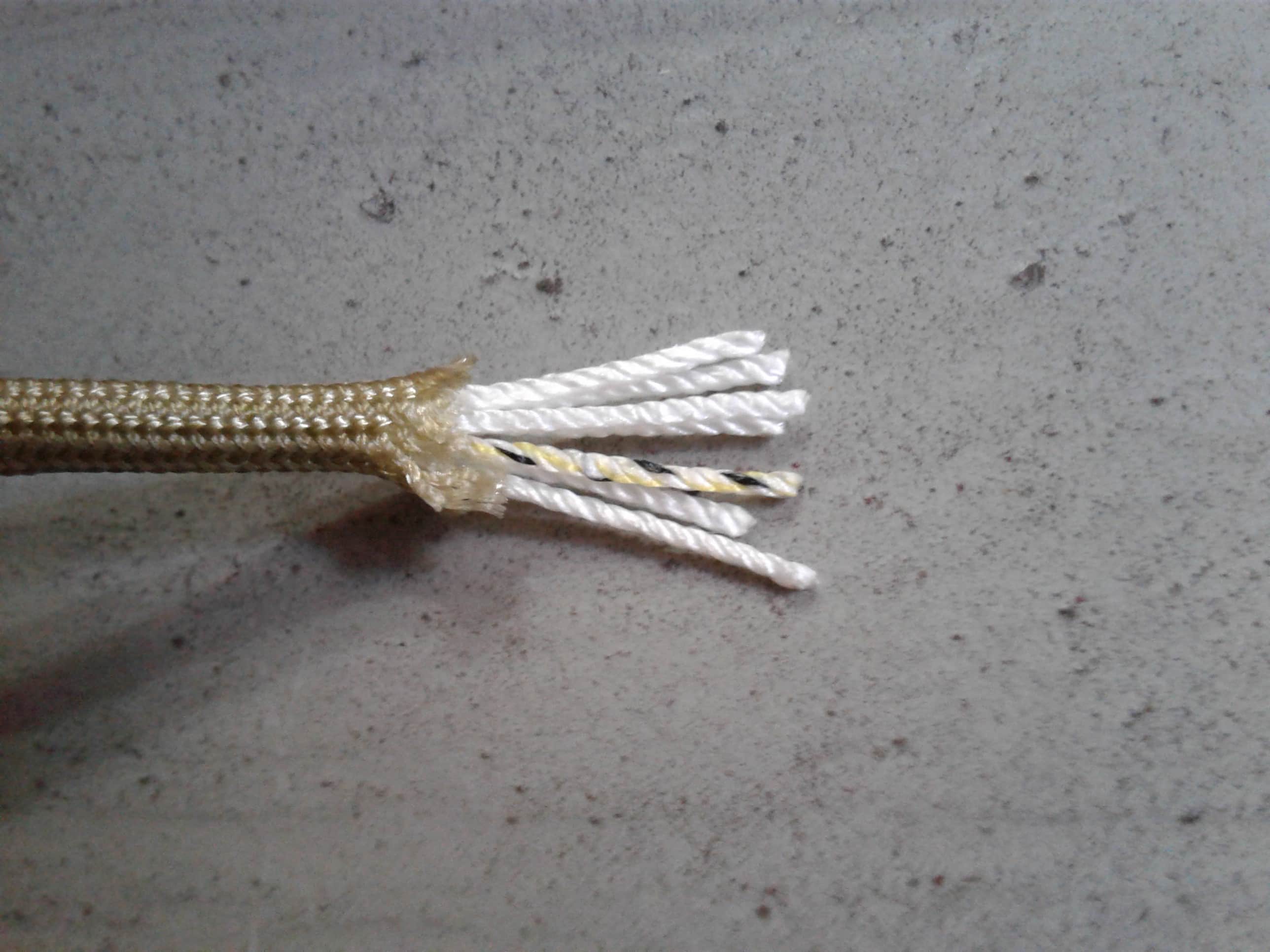
The different types of paracord have different specifications. If you want information on each kind of paracord as a visual comparison of size and construction, visit the cord comparison chart.
Out of This World!
I cannot begin to outline all the different ways that paracord has been used in the past. Some of the more interesting ones are:
Hubble Space Telescope
Famously, paracord was used in Hubble Servicing Mission 2.

According to spacetelescope.org:
Several tears in Hubble's insulation material were repaired with a mixed assortment of unconventional spacewalking tools: parachute cord, Teflon insulation with holders made of Velcro, Teflon-coated copper wire, electrical tie wraps and plastic tie wraps.
Pretty cool, huh?
Parachutes of Course!
Nylon fabric and nylon paracord were the first synthetic materials to be used in the making of parachutes. Did you know that the first person to jump with a nylon parachute was a daredevil named Adeline Gray?
While advancements in parachute construction have been made since WWII, Nylon is still the most used parachute material today. That means that in 80 years, we have still not found a better fabric that is as low-cost to produce as Nylon.
After an hour of scouring the internet, I was unable to determine if parachute suspension lines were still made of something resembling paracord. If anyone is an expert on the topic, let us know in the comments down below! Either way, paracord has played an important role in the history of the U.S. Military and beyond.
[UPDATE:] William Thackrey, a skydiving instructor on Quora, gives a good explanation of why paracord is not still used on parachutes today. Click the spoiler to see what he has to say:
Classic Survival Band
Can I write an article on paracord and not mention the classic survival bracelet? The look of the "cobra" weave is easily recognizable and has been the iconic look of paracord for years. While it is a very practical way of storing a large amount of paracord for survival situations, I find them to be a bit too bulky to wear them on an everyday basis. One way to get around that problem would be to make them out of a smaller type of paracord. The "lesser" types, while having slightly lighter breaking points, are still a highly useful survival tool. Another option would be to make a belt—a project I have yet to take on.
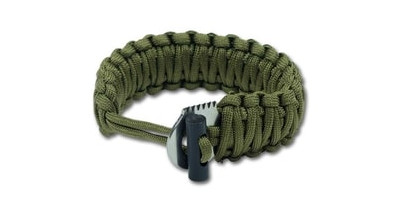
You!
Our community has been sending in some amazing images of their own creations. You are constantly inspiring us to push ourselves to greater creativity. We wouldn't be able to do what we love, without you doing what you love.
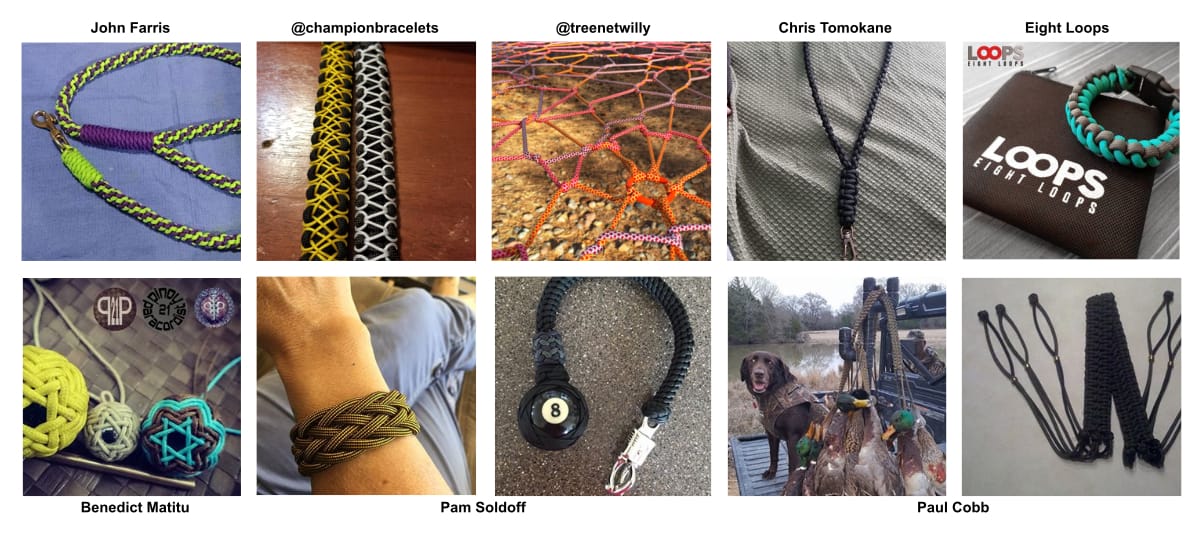
We can't wait to see what you come up with next!
The Important Stuff!
Maybe you scrolled through all that mumbo jumbo and still don't really understand what all the fuss is about. If you want to know what paracord is and don't want to read through the whole article, what I said can be summed up in a couple of less-technical points:
- Paracord has a glorious history that started in the middle of the last century sometime.
- It's really tough stuff.
- It has many survival applications, as well as every-day, practical uses.
- Not all paracord is made alike.
- No matter the quality, don't trust your weight to paracord unless you have no other option. PARACORD IS NOT A CLIMBING ROPE.
Conclusion
In recent years Paracord has become a popular cord used for all kinds of crafts and works of art. As you can see from some of the images above, there are some legitimately classy designs for paracord bracelets that you can hardly tell are made of paracord. We plan on featuring more of those in the near future, so stay tuned!


